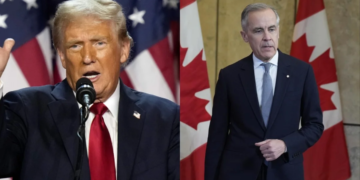“April 2, 2025 – has been designated as the “Liberation Day” by US President Donald Trump, followed by an unforgettable turning point in the global trade policy. Trump has announced an ambitious economic shift introducing universal tariffs aimed at liberating the American economy from the unfair trade practices reshaping America’s relationship with the global market. What will the Liberation Day tariff transformation cause?
The plan includes a universal 10% tariff on all imported goods, with a targeted increase as high as 60% on Chinese products. It signals a fundamental transformation in global economic dynamics. Supporters view this as America reclaiming economic sovereignty, potentially revitalizing domestic manufacturing and reducing dependence on foreign supply. The critics warn of retaliatory measures, increased consumer costs, and disruption to established global trade networks consequently leading to inflation.
Liberation Day Tariff Transformation
Donald Trump’s popular policy approaches, particularly on topics like immigration, trade, and international relations have always been the subject of debate.
During this time’s period of presidency, Trump’s tariffs have sent shockwaves in the global market. But the question arises, what was Trump’s urgency to declare April 2 as the liberation day and his tariffs on foreign goods? Trump’s attempt to shield the domestic US industries from foreign competition, especially when those countries are vital for the country’s interest i.e. generating revenue. To generate employment in the country and support the rise of manufacturing industries to become the global trade winner.
History of American Tariffs

George Washington, the first US president always boasted about the excellence of domestic US products. He also signed an act, which was basically a tariff with purpose of the encouraging and protecting the American manufacturers.
To generate revenue for the feudal government, tariffs serve a vital role in the US trading policy, reducing the risks of trade deficits and the pressure of foreign competitors. Behind, the rapid industrialization and development of America, tariffs have played a key role.
The average tariffs increased from 20 percent to 60 percent during the 1790s, before declining again to 20 percent. In 1861, the average tariffs increased to 50 percent and remained at that level for several decades. From 1934 onwards, the average tariff declined substantially until it leveled off at 5 percent. At the end of the American Civil War in 1865 about 50.8% of Federal income was generated by the tariffs. During the World War I, tariffs generated 30.1% of revenues.
Transformation in the Tariffs
The past tariffs of the USA mostly targeted China, Mexico, and some countries of Europe but now, the US is targeting all of its trading partners.
10-50% tariffs were formerly present on some specific industries i.e. Steel, Automobile, Aluminum, and Tech. However, now, it might transform into 10% for all the imports while 60% for the Chinese imports. The former tariffs were fixed but in the future, they may fluctuate, because of Trump’s attempt to end foreign reliance and protect the jobs in the US.
Due to the former fixed trade tariffs, the chances of a trade war were moderate but now due to the tariff fluctuation, there are high chances of retribution. The transformation of trade tariffs may result in higher consumer prices, inflation, global economic retaliation, and trade wars eventually.
While the US tariffs on 25% tariffs on automobiles have stunned the global market, there’s a possibility that Indian automakers may face a minimal impact. India exports the Tata cars in terms of automobiles to the US but holds dominance over the export of engineering goods, electronic goods, gems and jewelry, and pharmaceuticals. Meanwhile, there are possible chances of facing a crisis over the manufacturing of Indian auto parts. However, the Indian Stock Markets will likley be in turmoil, but analysts are hoping for the market to rebound.















Discussion about this post